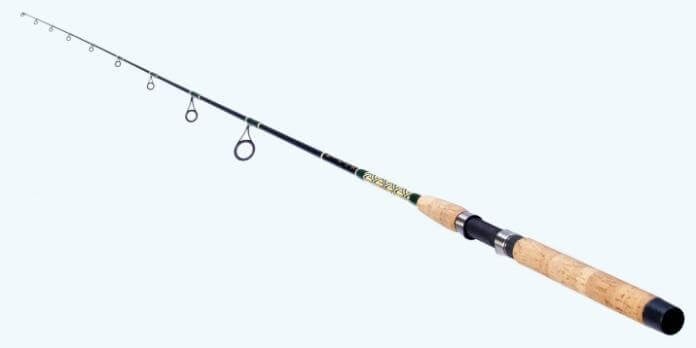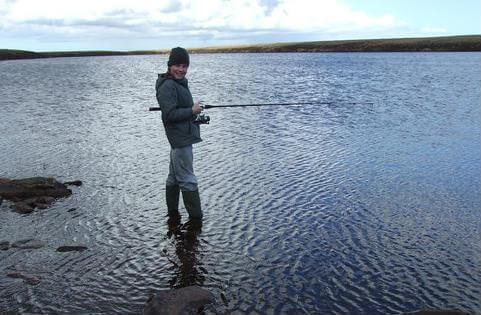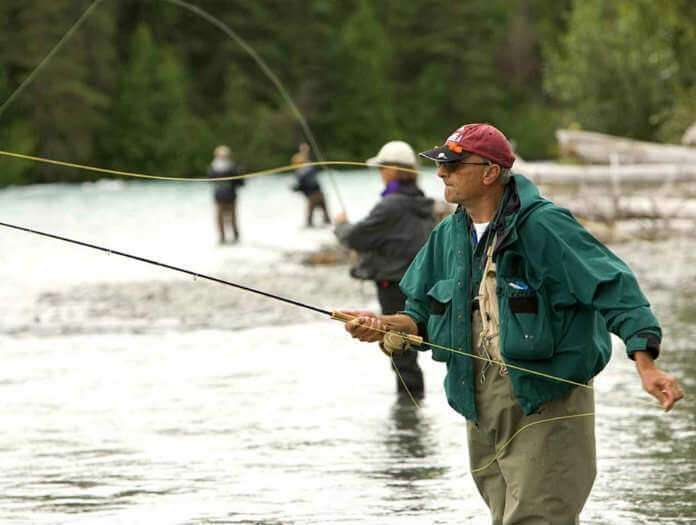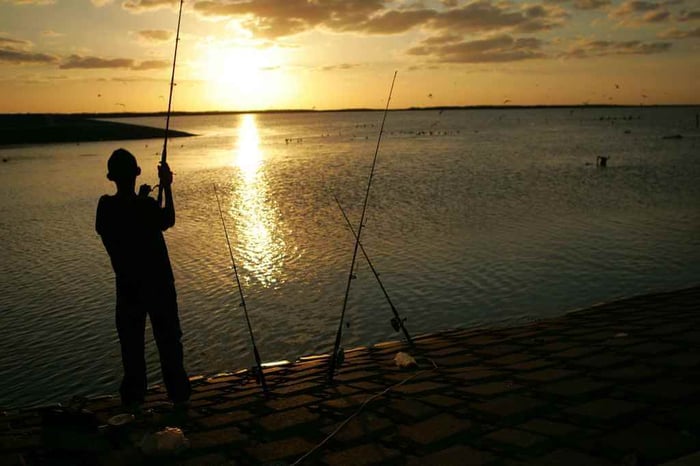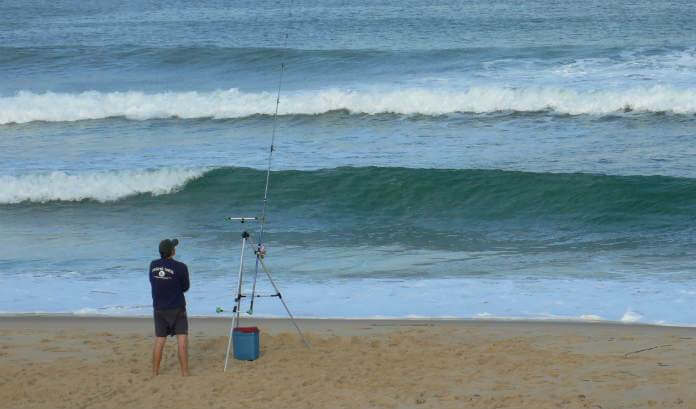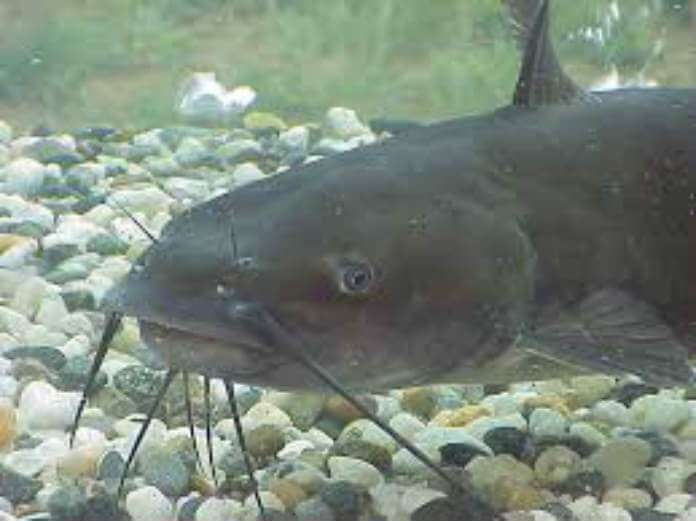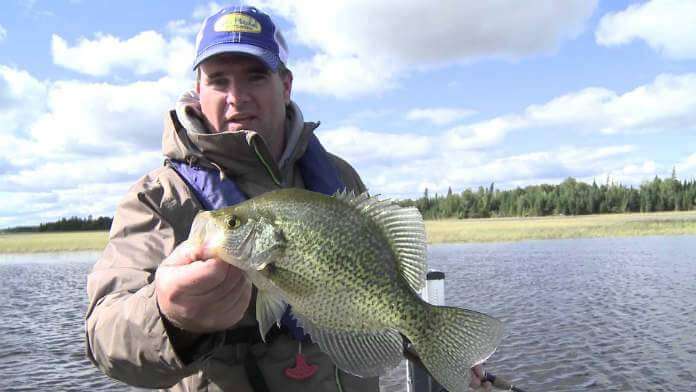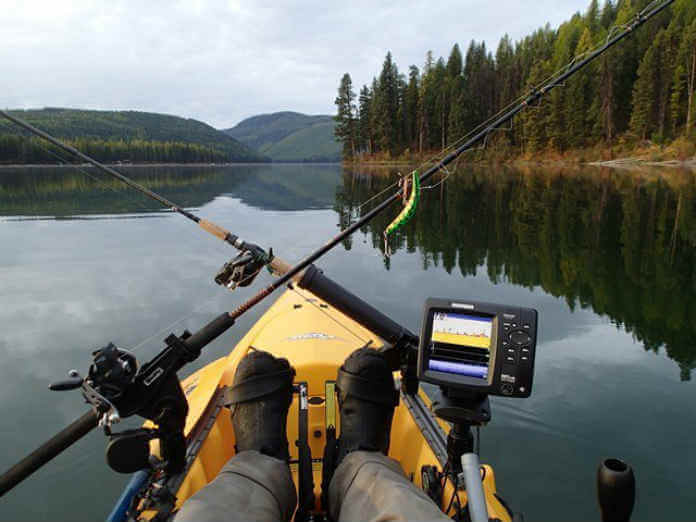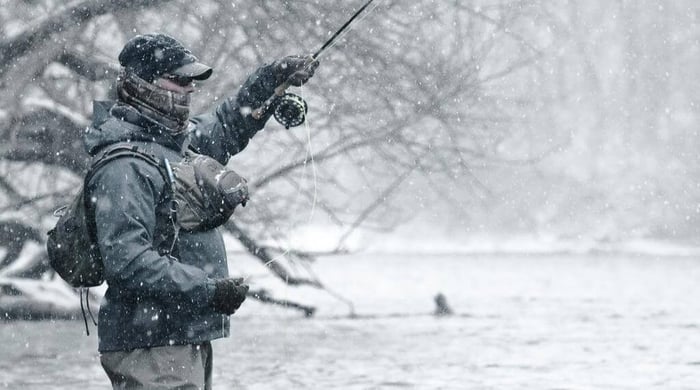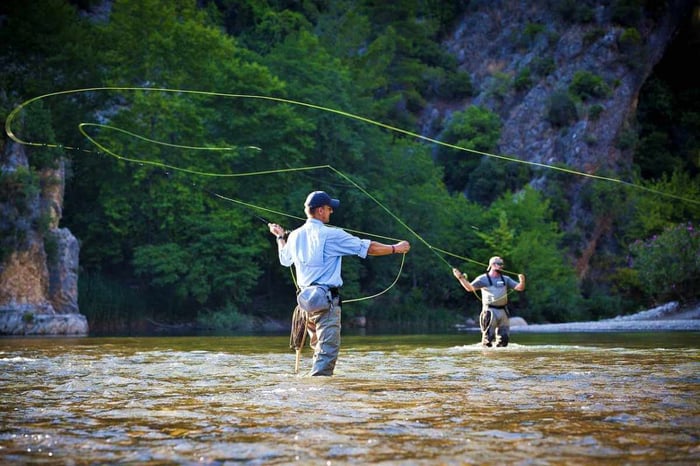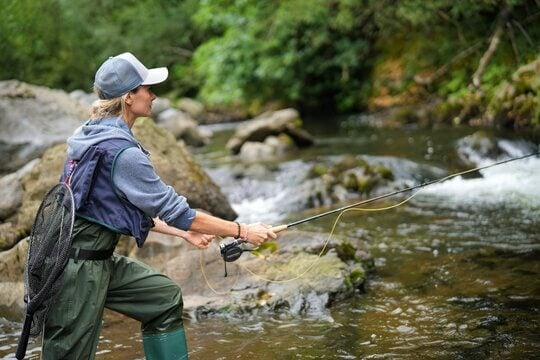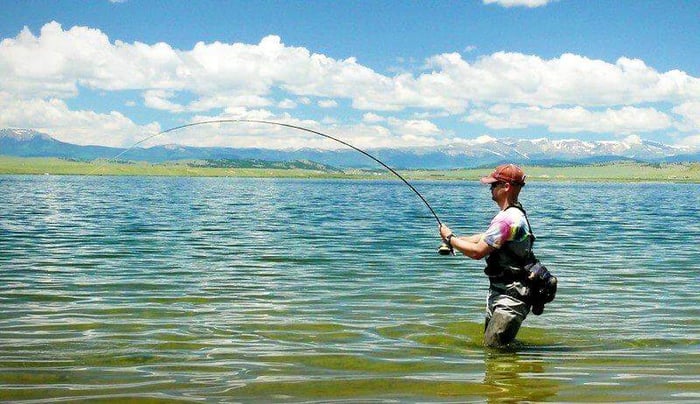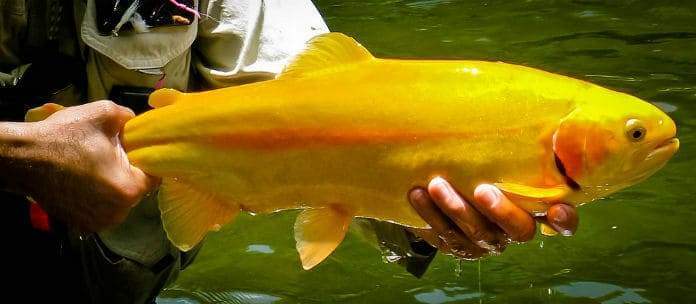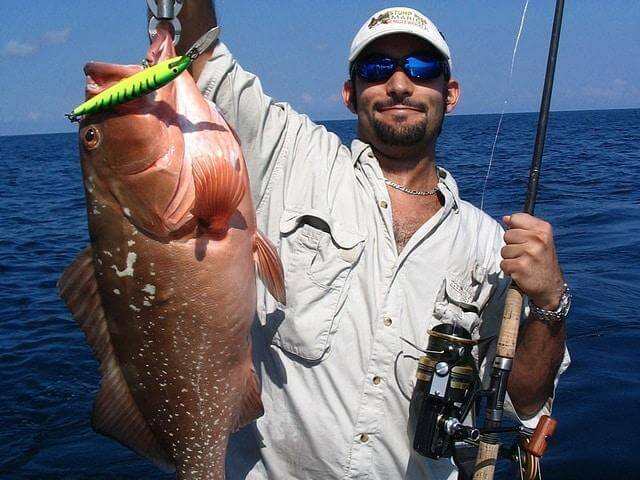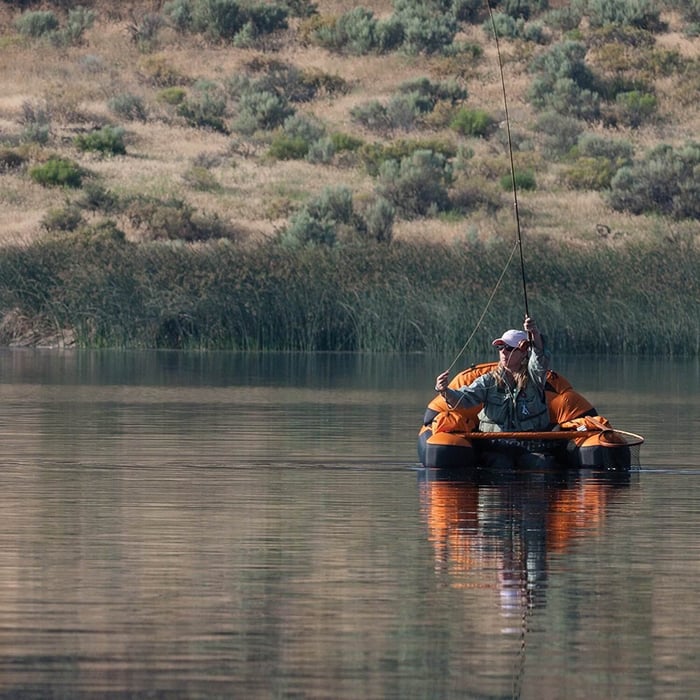Others may think that fishing is just a simple activity wherein you can just cast your fishing rod, and a fish will just be lured in and bite it, but no, it’s not. Depending on the expertise of the angler, fishing can be and is a complex activity that, however, can be enjoyed and perfected by both sexes and any age. Going on a fishing trip is one of the best and relaxing ways for families to bond together, but before going on the trip, for beginners, you have to learn the basic details of fishing for the whole pack to enjoy it.
You need to know the different types of fishing if you’re going on a freshwater fishing trip or saltwater angling. Learning so will give you the idea of what tools to bring with you and the perfect fishing rods and lures or baits for catching the fish. This article focuses mainly on the different types of fishing, lines, and hooks that will give you the information of what to use and where to use it when you go out fishing.
Check Current Sales On Fishing Reels
There’s More Than Just One Type of Fishing Rod
When it comes to fishing, you have to remember that there is more than just one type of fishing rod as you expect it would be, and they also vary in different sizes. Yes, fishing rods come in different sizes and have other uses and capabilities.
So in choosing the perfect fishing rod, you have to make sure that the rod’s length is just perfect in your hands and has excellent strength when you’re casting your rod, and will also have durability while retrieving your bait. Still, first of all, you have to know that there are different functions of fishing gear and its characteristics. So, to get the perfect rod for fishing, you have to keep a few things in mind.
In choosing the perfect fishing rod, the first thing you’ll be encountering is the fishing rod’s handle or the grip, and it’s usually commonly made out of foam or a cork. This is the part of the rod that you will mostly do business with. The grip of the fishing rod is where a part of your decision will be made in buying the gear. Once you’re comfortable with the handle or the grip of the fishing rod, then you’ll have the best experience in fishing.
Also, every fishing rod has its uniqueness, especially when it comes to the balance, flexibility, and strength of a fishing rod. To give you an example, the stronger fishing rods can cast heavier down to a gentler strike from a fish, or sometimes, stronger rods may not work well with lines that are light in weight. And for lighter fishing rods, these rods may be overly sensitive, and the problem sometimes with this type of fishing rod is that it may not fight a bigger kind of fish.
Also, fishing rods come in different lengths, they are made to be short and long, and those lengths have their capabilities in catching a fish. One of the most common rods used by an expert angler is the shorter rods, and this is best for battling and trolling a fish, especially in big game fishing.
Shorter rods can give the anglers more power when fighting a fish. On the other hand, a longer fishing rod can cast farther and is mainly used in fly fishing and surfcasting trips. In selecting a fishing rod, the material also affects the casting and the retrieval of your lures and catch. For example, there are fishing rods that are made of fiberglass and graphite materials. Fiberglass is excellent for durability since it is made to be tougher and flexible. Along with that is it’s not that expensive compared to other materials the fishing rod is made of. On the other hand, graphite is stiffer and lighter, thus making it sensitive and can be easily damaged.
Of course, in choosing the best fishing rod, you have to pick the ones you’re comfortable with. For this are the fishing rods that you’ll be using on your fishing trips, so try practicing with the fishing rod before buying it. If it gives you the comfort and has the style you wanted, go ahead and splurge, it’s for your fun and relaxation anyway. Once you’ve had the knowledge of what you’ll be fishing with and for, and when you’re already equipped with an amazing fishing rod, you can have that great experience. And to tell you what, no amount of money can satisfy the great experience you’ll get.
Contents
Pick the Perfect Line
Along with the perfect fishing rod you’ve just bought, you also have to pick the ideal fishing line to attach your bait with; fishing lines are the connection between you and your catch. It connects the anglers with its rod in every move, in every tug and pulls. So in choosing the perfect fishing line, you have to put in mind that you need a reliable fishing line that can fight against the fishes, even with those unexpected big game fish you’ll be catching. And there are several fishing lines in the market. However, in this article, let’s discuss the popularly used fishing lines and common fishing lines.
Most anglers' most commonly used fishing lines are the fishing lines made with monofilament and braid, but this article will also discuss other fishing lines. For now, the focus is the two.
Monofilament Fishing Line
Pros. This type of fishing line is made of nylon and is made to be a long and continuous filament. It is one of the most popular fishing lines since it comes in different colors and has various strengths compared to the other fishing lines. The monofilaments can stretch and absorb shock when retrieving your catch. It is also made to resist abrasions and be round in midsections, with this type of model helping keep the spool neat when casting and retrieving.
And the best thing with monofilament lines is that it is easy to tie a knot with; however can suffer from mimicking the spool’s shape, but blue and clear colored monofilament fishing lines are famous since fishes aren’t able to see those colors when it’s underwater.
Cons. The monofilament fishing line has its disadvantages. One of them is that monofilaments aren’t as strong as the braided fishing lines due to their diameter, which only means that increased pound test mono eats up more space when attached to a spool. Monofilaments are also made of nylon, and as far as you know, nylon breaks apart when exposed to water for a long period of time, so it is advisable to spool a fresh new line every year.
Braid Fishing Line
Pros. The braided fishing lines are made to be very strong on a given diameter. This is made with very thin and powerful fibers that are made as similar as the Kevlar put together and made to be round and cross-sectional and are sometimes regarded as strong as a monofilament fishing line. With the braided fishing line, you have the advantage of packing a longer line in your spool at any pound test.
Also, braided fishing lines can sink faster, and you can cast farther and trolls even deeper than a monofilament fishing line. And unlike a monofilament, it doesn’t take up the shape of your spool and doesn’t break apart in sunlight, which means you can keep the same braided line in the same spool year after year. And the best thing with a braided fishing line is that it doesn’t stretch at all, so that makes you feel everything from each bump and nudge of the fish.
Cons. Braided fishing lines have their disadvantages, and one of these is that it is very slippery, so for you to hold well, you have to tie knots for their low friction. And since braided fishing lines are strong, it is very difficult to cut, which means you have to carry something sharp with you every time you go fishing using the braided fishing line. And the one thing that the monofilament fishing line is great underwater is because the fish cannot detect it as bait. However, the braided fishing line is not clear or see-through when submerged underwater; that’s why most anglers use a leader that helps hide the line from the fishes. Braided fishing lines are also made to be less resistant to abrasion compared to the monofilament fishing line. Unlike the monofilament line, the braided line has no stretch, which means you have no idea when a fish strikes. To fight this, you have to use less drag.

Other Kinds of Fishing Lines
Fluorocarbon. This type of fishing line is sometimes used as a leader that helps hide another fishing line so that it won’t be seen by fish when it's submerged underwater. It is also made to be resistant to abrasion, thus giving more compliments to braided fishing lines. And the good thing is, fluorocarbons nowadays are now being sold to be the mainline as well.
Wire Line. This type of fishing line is also used as a leader to fish for toothy fishes like a tuna or a mackerel. Wire fishing lines are made with different varieties such as braided and often single strands and need a tough spool for its reels. This type of fishing line is excellent in trolling fishes in deeper depths, making it essential to bring most anglers.
Fly Fishing Lines. This type of fishing line comes in different weights, which means it comes about the heaviness of a fishing line, not by its breaking strength. Fly fishing lines are attached to a tippet that acts as a leader to achieve a breaking strength.
Know More about Your Fishing Hook
When it comes to fishing, rods, and line are as important as the fishing hook needed. And to give you an idea, the most essential part of the fishing hook is its size. Just come to think of it, if the fishing hook is big, a small fish won’t bite the full size. The same idea goes for a smaller fishing hook when it comes to a bigger fish, and the big fish will swallow it all and give you a hard time practicing a catch-and-release scene. Adding to that, it will give the fish a huge trauma. So to further go on, this part of the article will discuss the anatomy of a fishing hook and the necessary size for catching a particular fish.
-
-
- The Point – this is the sharp end of the fishing hook that hooks in the mouth of the fish.
- The Barb is the projection of the point of the fishing hook that extends backward and helps keep the fish from being unhooked.
- The Eye – this is the part where you connect the fishing line
- The Bend, the gap, and the shank are the remaining parts of the hook.
- Sizes of the Fishing Hook is the most critical part of the fishing rod. The size of the hook varies on your catch considerably. The size of the fishing hook varies from the smallest, which is size 32, to the largest size of 19\ 0. So that means that the bigger the number, the smaller the size, and vice versa. However, for the fishing hook sized from 1\ 0 t0 19\ 0, the size stands for the number, which means the larger the number, the larger the size.
-
